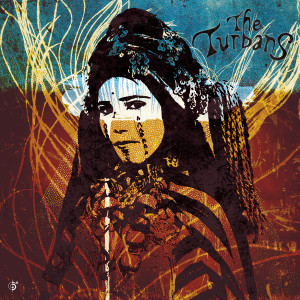 Listening to this album is the most fun I’ve had (musically speaking) in a long time. The Turbans bring a passionate spirit of adventure and an infectious liveliness to their music. Even if you can’t understand the lyrics – which are in up to a half-dozen languages – it’s impossible to not be captured by their joy.
Listening to this album is the most fun I’ve had (musically speaking) in a long time. The Turbans bring a passionate spirit of adventure and an infectious liveliness to their music. Even if you can’t understand the lyrics – which are in up to a half-dozen languages – it’s impossible to not be captured by their joy.
The members of The Turbans come from across Europe and the Middle East, with roots in Turkey, Bulgaria, Israel, Iran, Greece, Spain, and England, and their high-octane music draws on Balkan, klezmer, Gypsy, Greek, Turkish and African beats, styles, sounds and instruments.
The founders of the group were guitarist Oshan Mahony and violinist Darius Luke Thompson, both half-Iranian and half-British. After meeting in Kathmandu, they began picking up other musicians while busking throughout India, and now with seven core members, and having spent seven years playing around the world, they’ve committed their sound to record.
For a flavor of the wild spirit of this band, check out this video for their first single, “Riders.”
Here’s a sample of the song’s lyrics, translated from Greek to English:
Here in the hippie quarters / We play the Gypsy tunes / Your eyes came to my mind, / Again they dazzled me big time. / Come along my darling girl / Even if you are barefoot and half dressed / There is no one else but you / Let’s roam away, you and me. / Eternal riders, nothing stands in our way. / Full time festive fun, / Gypsies without tents and land.
Other regular members of The Turbans include vocalist and guitarist Miroslav Morski, a former Bulgarian pop star; Greek folk singer Pavlos Mavromatakis; cajon player and classical guitarist Pablo Dominguez; Israeli guitarist Moshe Zehavi, who parents are from Turkey and Tunisia; and oud player Maxim Shchedrovitzki, a native of Belarus. It was recorded on Mahony’s family farm in Northumberland with assistance from World Circuit veterans Jerry Boys and Tom Leader.
One of the most intriguing and offbeat tracks is “Hamouda,” sung in Gnawa by the Moroccan guembri (bass lute) player Simo Lagnawi, who is one of the guest musicians. It’s a drum-heavy ritual trance type piece, and it leads into my early favorite track “Chubby.” That’s a pun on the Moroccan pop style called chaabi, and it features guitar lines that remind me of Tuareg music, along with a bunch of woodwinds, guitars, oud and lots of danceable percussion. “Samia” is sung in French with Levantine vocal inflections, Latin-influenced rhythms and guitars, jazz-influenced drums and a myriad other influences.
Other key tracks are “Aman,” which sounds like a blend of flamenco and klezmer; the wild gypsy rumble “Kansianitsa,” which gives Thompson lots of opportunitiy to show off his violin chops; and the final track “Hackney,” a multi-culti tribute to London’s most international neighborhood and one where all the band’s members have lived at one time or another.
But really, just drop the needle anywhere on this recording and it’s marvelous.
(Six Degrees Records)
